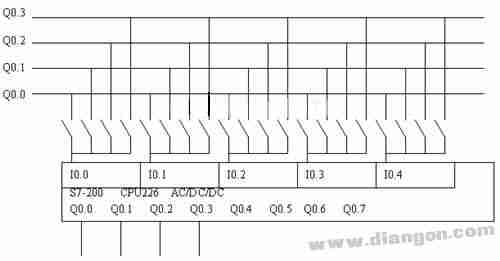In modern automation systems, touch screens and PLCs are commonly used together to manage process parameters, display system status, and show fault information. However, direct interaction with the touch screen can lead to wear and tear, reducing its lifespan. To address this issue, some systems use touch buttons or combine an industrial computer with configuration software for parameter settings and displays. While effective, these solutions tend to be significantly more expensive than standard touch screens.
To solve this problem, I implemented a control method that uses PLC programming combined with external buttons for touch screen functions and numeric input. This approach avoids direct touch screen operation, thereby minimizing damage and extending its life.
The hardware setup includes a Siemens S7-200 PLC and a TP170 touch screen. Four function keys (F1-F4) are used for switching between different screens, while ten numeric keys (0-9), two directional keys, an exit key (ESC), a delete key (DEL), and an enter key (ENTER) are used for setting and modifying parameters. To reduce the number of required PLC input points, a matrix scanning method was employed. The circuit connection is designed to generate 20 button signals using only 4 output points and 5 input points, making it more efficient than using one input per button.

This matrix scanning technique allows the PLC to acquire 20 signals in a time-sharing manner, eliminating the need for additional input points. The software implementation involves several network blocks for initialization, scanning, and signal processing. Each scan cycle increments a counter, and based on its value, specific output bits are activated to represent the current scan line. For each scan line, the corresponding buttons are checked, and their states are stored in memory registers.
The program also handles key repeat issues, ensuring that repeated presses do not cause unintended actions. By converting the 20 button signals into 20-bit memory locations (M200.0 to M22.3), the system effectively maps external buttons to touch screen functions. This method offers a cost-effective solution by leveraging PLC programming to replace expensive industrial interfaces, while still maintaining full functionality for system control and parameter adjustment.
Overall, this approach optimizes resource usage, reduces costs, and enhances the durability of the touch screen, making it ideal for industrial applications where reliability and longevity are critical.
iPad Stylus Pen,Wireless Stylus for iPad,Bluetooth Stylus Pen for iPad,Stylus Pen for iPad,Drawing Stylus Pen for iPad
Shenzhen Ruidian Technology CO., Ltd , https://www.wisonen.com